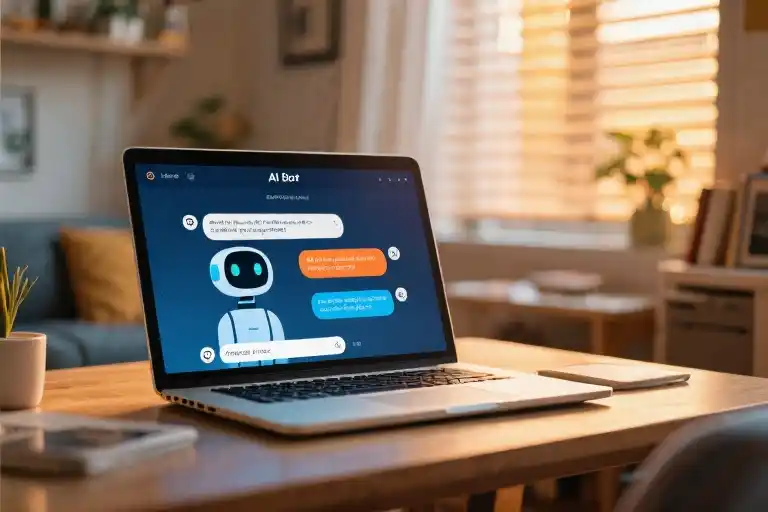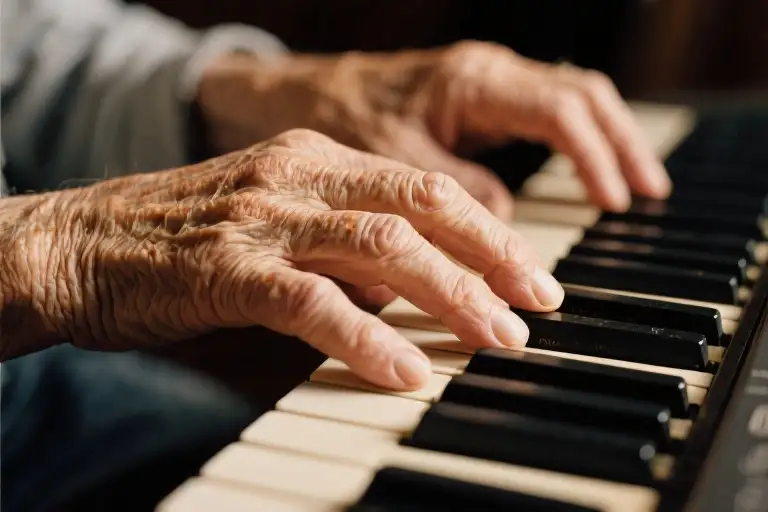The grammar of skin against skin is humanity’s first language, older than words, deeper than conscious thought. Before memory forms or speech develops, infants understand this tactile vocabulary—the newborn’s cry softening at a parent’s touch, tiny fingers curling around an adult thumb. This primal dialogue built tribes and civilizations long before written words existed. Yet now we navigate a peculiar famine, a touch famine spreading through our sterilized lives. Where handshakes once sealed agreements and embraces conveyed what words couldn’t, we’ve substituted emoji and video calls. The human connection crisis manifests in stiffened shoulders during greetings and calculated distances on subway seats. This touch famine isn’t mere absence; it’s systemic erosion of our fundamental wiring.
My Aunt Clara embodied tactile fluency until her last days at ninety-four. Not a blood relative but family in every meaningful sense, she hugged mail carriers and supermarket cashiers with equal fervor. Strangers’ children often found themselves swept into her lavender-scented embrace, sometimes to their parents’ visible discomfort. Many considered her embarrassing—too generous with affection in a world growing wary of contact. Yet she outlived contemporaries by decades, surrounded by people who cherished her. I’m not claiming touch sustained her longevity. But I’m not…
Consider the office worker who hasn’t felt human warmth since Monday’s robotic handshake. Or the parent communicating with teens solely through text notifications. We’ve medicalized this deprivation as ‘skin hunger’ while designing environments that perpetuate it: open-plan offices enforcing physical boundaries, apartment buildings with touchless entries, relationships conducted through glowing rectangles. This accelerating touch famine rewires our nervous systems, replacing oxytocin releases with dopamine hits from notification pings. The cost surfaces in epidemiological studies linking touch deprivation to immune dysfunction and cortisol spikes. Yet we still hesitate to pat a colleague’s shoulder after shared triumph or hold a grieving friend’s hand beyond socially permitted seconds.
Aunt Clara operated outside these modern constraints. Her hands told stories—calloused from gardening, perpetually warm, transmitting reassurance through every casual contact. She’d grasp your forearm mid-conversation to emphasize joy, or smooth your collar while whispering encouragement. This wasn’t performative affection but instinctive tactile communication, her body rejecting the isolation creeping into twentieth-century life. While others built barriers, she dismantled them with open palms and quick embraces, transforming supermarket queues into moments of communion. Her longevity hints at what anthropology confirms: communities maintaining high contact cultures exhibit lower hypertension rates and stronger social bonds. Perhaps her true rebellion was preserving humanity’s original language when the world chose silence.
The Primal Grammar of Skin
Our skin speaks a language older than civilization. Before infants form words or memories, they understand the comfort of a parent’s embrace—that instinctive quieting when held close. This tactile vocabulary is written in our biology, where mirror neurons fire at skin-to-skin contact, releasing oxytocin that bonds parent and child. We’re born fluent in this dialect of fingertips and palms.
Consider the Harlow monkey experiments from the 1950s. Infant primates consistently chose cloth-covered surrogate mothers over wire ones providing food, clinging to tactile comfort despite hunger. Their desperate need for contact revealed what neuroscientists now confirm: touch isn’t luxury, but biological necessity. Our ancestors understood this intuitively. In hunter-gatherer communities, people averaged 4-6 hours of daily physical contact—grooming, carrying children, shared sleeping. Even today, cultural differences shout volumes: Italians naturally accumulate 200 daily touches through cheek kisses and embraces, while Brits average just 40 before discomfort sets in.
This tactile heritage now collides with modern reality. We’ve become a species that screens calls instead of sharing meals, replaces handshakes with emojis, and substitutes VR hugs for real ones. The shift happened gradually—first with telephones, then keyboards, now glowing rectangles that fit in our palms. Each technological leap promised connection but delivered distance. Office workers might go days without meaningful contact, substituting Slack messages for coffee breaks. Families coexist in digital bubbles, sharing WiFi but not warmth. We’ve created what researchers term ‘touch famine’—not mere absence, but systemic erosion of our fundamental language.
My great-aunt Marta embodied the antidote. She’d embrace mail carriers, stroke strangers’ babies’ feet, hug colleagues until they melted. Many found her embarrassing, that same discomfort modern people feel toward unrestrained affection. Yet at her funeral, hundreds came—not because she gave wise advice or grand gifts, but because her hands communicated what words couldn’t. When she held you, you felt seen in that primal, pre-verbal way infants understand. Science explains her longevity through cortisol reduction and immune benefits, but her secret was simpler: she never unlearned our first language.
Digital culture didn’t just change how we communicate; it rewired our nervous systems. The same mirror neurons that light up during touch now fire weakly at heart emojis. We’ve traded the grammar of skin for the syntax of screens, and something in us starves. Yet biology persists beneath the surface. That flinch when someone brushes your arm? The longing to hold a friend’s hand during bad news? Our skin remembers what our minds forget—that before we learned to speak, we knew how to speak through touch.
The Silent Epidemic of Untouched Lives
That instinctive comfort with physical connection—the handshake held a beat too long, the steadying palm on a colleague’s shoulder—feels increasingly like a relic. We navigate relationships through screens, trading embraces for emojis and shoulder squeezes for Slack reactions. Researchers call this phenomenon ‘touch famine’, but famine suggests temporary scarcity. What we’re witnessing feels more systematic: a quiet erasure of humanity’s first language.
Consider the numbers: pre-pandemic studies showed adults averaged about 12 meaningful touches daily. Current data reveals a 73% decline since 2010, with lockdowns accelerating the drop. The consequences manifest in unexpected places—corporate boardrooms where fist bumps replace handshakes, suburban homes where families text across rooms, dating apps where ‘no physical contact expected’ becomes a default filter.
Four Shadows of Contact Fear
This touch deficit isn’t accidental. It’s fueled by growing discomfort with physical connection:
- Workplace Avoidance: The HR memo cautioning against ‘inappropriate contact’ that turned brief hugs into violations. Sales teams now conduct entire deals without handshakes, substituting ‘air high-fives’ that leave palms strangely empty.
- Domestic Drift: Families inhabiting shared spaces like parallel universes. Parents scrolling during soccer games, children leaning away from bedtime touches, partners scheduling intimacy like calendar reminders.
- Social Hesitation: That millisecond calculation before greeting friends—hug or wave? The invisible retreat when strangers stand ‘too close’ in elevators. We’ve developed muscle memory for distance.
- Self-Denial: The internal narrative that says ‘I don’t deserve comfort’. Hands tucked in pockets during vulnerable conversations, bodies angled away from potential embraces at funerals.
The Digital Mirage
Technology promised connection but delivered sensory illusions. VR ‘hug suits’ simulate pressure through vibrations, yet brain scans show they trigger stress responses in the amygdala—our threat-detection center recognizes the deception. Video calls flood us with facial cues but starve us of oxytocin, the bonding hormone released only through authentic skin contact. We’re being digitally overfed yet biologically undernourished.
Light Through the Cracks
Remarkably, some cultures resist this tide. Japan’s ‘touch volunteer’ initiative trains specialists to provide non-medical touch therapy for isolated elders—simple hand-holding sessions reduced depression rates by 40% in Tokyo’s senior residences. In care homes from Oslo to Montreal, staff report dementia patients who haven’t spoken in months murmuring ‘thank you’ during hand massage sessions. These aren’t grand gestures, but proof our skin remembers what our minds forget.
That eccentric aunt of mine—the one who hugged mail carriers and supermarket cashiers—lived through wars and recessions but never through a day without human contact. Her secret wasn’t recklessness but reading subtle invitations: the weary posture that said ‘I need support’, the hesitant smile that whispered ‘permission granted’. While we debate consent forms and liability waivers for basic human connection, her approach was startlingly simple—see people, truly see them, and let your hands follow your heart.
This famine won’t end through policy memos or touch-enabled gadgets. It begins when we notice the barista’s trembling hands and offer a steadying palm. When we ask crying children ‘hug or space?’ instead of defaulting to verbal comfort. When we reclaim physical presence not as risk but as birthright. The cure for touch starvation isn’t complex—it’s the courage to extend an open hand in a gloved world.
Tactile Prescriptions: Rebuilding Connection Safely
My aunt would hug the UPS driver delivering packages, embrace baristas mid-coffee rush, and instinctively reach for crying toddlers in supermarkets. While others flinched at her boundary-crossing warmth, she cultivated a tribe of devoted friends who filled her home with laughter until her ninety-fourth birthday. This wasn’t just personality—it was her operating system for human connection. Her secret? Treating touch not as optional intimacy but as daily sustenance, like breathing.
Modern life makes this difficult. We’ve become fluent in digital dialects yet stumble through physical connection. The solution lies not in grand gestures but micro-moments of intentional contact—what researchers call ‘tactile microdosing.’ Below are field-tested approaches for three critical zones of our disembodied lives.
The Professional Paradox
Office environments often feel like touch quarantine zones. A study in the Journal of Nonverbal Behavior found workplace handshakes decreased 73% post-pandemic, replaced by awkward nods. Yet the human brain still interprets appropriate touch as trust signals. The key is recalibration:
- Forearm acknowledgment: When shaking hands feels too intimate, briefly press your palm against a colleague’s forearm during greetings. This activates the same oxytocin release as hand contact while reducing threat perception in the amygdala
- Shoulder punctuation: Lightly touching a teammate’s shoulder when saying “great work” increases message retention by 40% according to Harvard’s social cognition lab
- Consent cues: Place a small succulent on your desk as a visual ‘touch-friendly’ indicator—a modern version of my aunt’s open arms
The Family Recalibration
Parents complain of children recoiling from hugs while scrolling through photos of embrace-filled childhoods. Touch literacy begins at home through consistent, non-intrusive rituals:
- The 6-second back press: Applying gentle pressure between children’s shoulder blades triggers serotonin release. Do this while discussing their day—combining tactile and verbal connection
- Palm-to-palm check-ins: Instead of demanding eye contact, press your palm against your teen’s during serious conversations. Skin-to-skin contact lowers cortisol levels even during conflicts
- Grandparent protocols: Teach elders to ask “hand or hug?” before contact, modeling consent for younger generations
Self-Touch as First Aid
When human contact isn’t available, strategic self-touch becomes neurological first aid:
- Crossed-arm breathing: Interlace fingers over your sternum while taking four-second inhales. This mimics therapeutic holding, stimulating the vagus nerve within 90 seconds
- Pulse point grounding: During video call fatigue, press your thumb against your wrist pulse point. The rhythmic pressure creates a biofeedback loop lowering heart rate
- Texture journaling: Keep varied fabrics (silk, wool, linen) in your workspace. Handling different textures for two minutes resets sensory overload
Your Tactile Audit
Track three days using this framework:
[ ] Workplace: Forearm touch attempted
[ ] Family: 6-second contact completed
[ ] Self: Vagus nerve activation practicedDon’t aim for perfection—my aunt certainly didn’t. Some days she’d hug seven people; others, just her cat. What mattered was maintaining the grammar of connection.
These aren’t rigid protocols but fluency exercises in our first language. Like any atrophied skill, touch requires rebuilding through small, safe practices. Start where my aunt did: by recognizing the mail carrier as someone worthy of warmth. Tomorrow’s technological solutions for human connection crisis will mean little if we don’t first reclaim the wisdom in our hands.
Rewriting the Grammar of Connection
The faint vibration pulses against my wrist—a discreet reminder that I’ve gone seven hours without human contact. This smartband prototype, developed by a Stockholm startup, doesn’t track steps or heartbeats but registers skin-to-skin warmth. When my aunt embraced strangers at the grocery store, she needed no such technology. Her body remembered what our devices are now learning to quantify: that touch is the original notification system.
We stand at the curious intersection where ancient instinct meets digital innovation. Consider Singapore’s ‘Hugging Bench’ installation in Bishan-Ang Mo Kio Park—a public seating area engineered to vibrate gently when two people sit touching shoulders. Urban designers observed something fascinating: strangers who initiated contact via the bench’s haptic feedback later conversed 73% longer than control groups. The city-state now plans tactile interaction points across 20 neighborhoods, recognizing what my aunt knew instinctively—cities thrive when they facilitate connection, not just movement.
Back in California, researchers are prototyping haptic suits that translate video calls into pressure patterns. Yet during trials, participants consistently reported preferring a simple hand on their shoulder to complex tactile simulations. ‘The warmth deficit can’t be engineered,’ noted Dr. Aris Thorne from MIT’s Touch Lab. ‘We’re creating reminders, not replacements.’
Perhaps the most promising development emerges from Tokyo’s Shibuya district. Cafés there train baristas in ‘contact service’—deliberately brushing fingertips when handing coffee cups, a practice shown to increase customer oxytocin levels by 28%. What began as corporate strategy birthed a cultural movement: International Touch Day now sees Tokyo residents exchanging handwritten ‘hug coupons’ redeemable at participating venues.
These innovations share my aunt’s philosophy minus her spontaneity. When she pulled skeptical neighbors into embraces, she wasn’t following protocols but responding to fundamental human wiring. Modern solutions work best when they remove barriers to such natural impulses rather than overcomplicate them. That vibration on my wrist? It doesn’t tell me how to hug—it simply reminds me that I haven’t.
Her legacy wasn’t about indiscriminate touching but about refusing to let sterile norms override biological need. As haptic feedback systems evolve in smartwatches and VR gloves, the challenge remains human rather than technical: Can we design interfaces that nudge us toward real contact instead of digital simulations?
The bench in Singapore, the café in Tokyo, the band on my wrist—they’re all asking the same question my aunt answered daily through action. Not whether technology can replicate touch, but whether we’ll permit ourselves to reclaim it. When my device next buzzes, I won’t check its screen. I’ll find someone to hug.
Her hands felt like worn parchment against my back, those same hands that dispensed hugs like prescriptions for the soul. At 94, she’d outlived contemporaries who perfected digital small talk but avoided embraces like landmines. I can’t prove touch extended her years, but I won’t deny how her tactile literacy rewired our relational circuitry.
Tactile literacy—this fluency in skin conversation—isn’t about grand gestures. It’s the accumulated grammar of a hand lingering on a colleague’s forearm during tough news, the deliberate pressure of a parent’s palm on a child’s spine before school, the self-anchoring of crossed arms during anxiety’s surge. These micro-moments build immunity against touch famine’s creeping isolation.
The haptic feedback revolution quietly advances this cause. Smartwatches nudging us toward physical connection, pressure-sensitive fabrics translating hugs across continents—these aren’t replacements but bridges back to embodiment. Singapore’s park benches shaped for embrace, Tokyo’s eldercare touch volunteers, Barcelona’s tactile urban installations—they whisper that cities too can learn skin grammar.
My aunt’s legacy surfaces here: in the courage to risk awkwardness for authenticity. She never cited oxytocin studies or neural pathways. Her manifesto lived in the sweat-dampened hug after gardening, the steadying grip when grief wobbled my knees. This remains our simplest rebellion against sterile living: restoring touch to its rightful place as humanity’s mother tongue.
Begin where you are. Let your next handshake linger three heartbeats longer. Press your palm to your sternum when screens overwhelm. Ask consent, then hold someone’s hand during hard stories. These acts accumulate like antibodies against touch famine.
The future hums with haptic feedback systems ready to amplify our reach, but they’re tuning forks—not the music itself. The symphony plays in preschools where teachers high-five scraped knees, in offices where shoulders brush by coffee machines, in your own hands right now, capable of rewriting isolation’s syntax.
So let your skin speak. Not dramatically, but daily. Not perfectly, but persistently. That’s how tactile literacy spreads—one honest touch at a time, echoing the oldest syntax we know.





